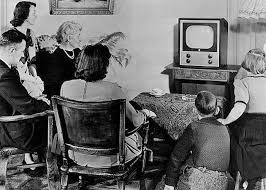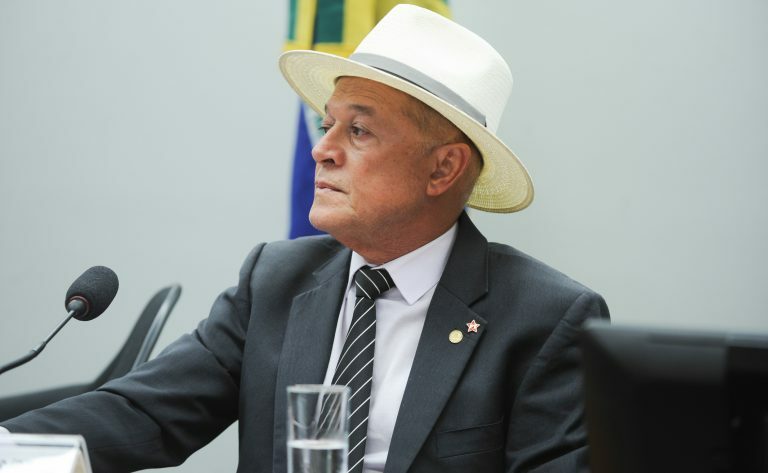
The subject of regulation /legalization of Community Networks has aroused much interest around the world. At the same time, in some countries, the recognition of the importance of Community Networks as a relevant actor for broadening Internet access in rural and hard-to-reach (or low economic interest) areas is advancing, in others, the debate on autonomous communication infrastructure still needs a lot of deepening, and it faces the emergence of governments that are little engaged in ensuring fundamental rights.
Beyond the political debate, the radio spectrum is today conceived in a new context of the evolution of technical systems, which allows its dynamic use by different management techniques much more efficient than the model executed by states during the analog century: it’s called dynamic spectrum management.
Throughout the world, in the most diverse international forums and meetings, new concepts of spectrum use emerge as effective possibilities to expand the use of this resource so fundamental for local, regional and global communications. Below are some of the main ongoing debates between regulators, policymakers and researchers.
Secondary use of spectrum
In assigning frequency bands for commercial exploitation by businesses, governments and civil society have found it extremely difficult to achieve universal access to basic communication services, such as access to a cellular network or the Internet. This is because companies do not envision a profitable business in low-density or hard-to-reach locations, which would make infrastructure installation more expensive. As an option to allow these excluded groups to communicate, regulators around the world are considering the feasibility of granting secondary spectrum use through cognitive radio , maintaining the “ownership” of the frequency band of the spectrum holder of the primary exploitation right, who paid at a frequency auction for that right. Despite its allegedly progressive character, promoting innovation and a different vision on how to manage the spectrum, researchers and representatives of civil society consider that secondary use does not guarantee local investment in infrastructure since the primary right holder could at any time occupy the frequency and cause the loss of all local community network building work.
Spectrum sharing
Another idea for the secondary use of spectrum is the so-called “spectrum sharing ”. This is a very ambiguous concept, as it does not guarantee any rights, it only makes spectrum occupation more “flexible” presenting an approach to spectrum that is shared “in time and space”. According to the definition proposed by the USA regulatory agency: “Spectrum sharing is necessary because growing demand is crowding the airwaves. Smartphones, the Internet of Things, military and public safety radios, wearable devices, smart vehicles and countless other devices all depend on the same wireless bands of the electromagnetic spectrum to share data, voice and images“.
In fact, spectrum sharing could reflect a technical reality in which there would no longer be any need for dedicated bands to operate, we could count on a database or local real-time spectrum monitoring technologies, and effective use of the spectrum would gain many more players if it allowed and encouraged sharing as a new spectrum management paradigm: when not in use, anyone could occupy a free-range in the spectrum. A “high quality” transmission could also be reduced to make room for another, and so on.

By digitizing media, including TV and radio, a single transmitter is capable of sending 4 or more programs: this is called multiprogramming. In the current regulation of digital TV in Brazil, every Brazilian municipality has the right to request its citizenship channel for free (something unheard of until today), and thus have “two tracks for community associations, with local programming of interest to the beneficiary population.” In addition to audiovisual programming, digital TV comes with interactivity through the middleware Ginga, which makes tv no longer a unidirectional media, as it can also transmit data and services, constituting a technology with huge potential for community networks in Brazil and Latin America.
Free Spectrum
For more than a decade, we have been discussing in Brazil the proposal for a regulation that contemplates both technically and socially the freedom of expression of any person, regardless of previous authorization. Beyond the myth of interference that creates private avenues of communication, why aren’t there open roads, open spectrum, where we can all communicate nonprofit?
We’re engaged in promoting the unlicensed use of spectrum considering the technical reality that today makes accessible multiple equipment for local spectrum monitoring, like cognitive radio and modulation at all frequencies through software-defined radio.
This analogical-digital encounter should mean a paradigm shift: the end of spectrum scarcity . From a management model of a scarce good to an open system of free appropriation in a universe of abundance where spectrum management is most efficient because it is dynamic.
That is, as provided in Article XIX of the Universal Declaration of Human Rights, and Article 5, paragraph 9 of the Brazilian Federal Constitution, the State does not need necessarily to authorize the use of spectrum for communication, scientific or non-profit activities. At the beginning of this century, we already have much more efficient technologies that surpass the concession model, assigned from central power in a capital which is unable to see the specific potential that each locality has to develop its own communication tools. What if the spectrum were municipalized (Silveira, 2001), each city designing its way of managing its own digital environment empowered in a multiplicity of experiments across different continental territories?
The Free Spectrum, therefore, proposes that we take into account the legal nature of communication infrastructures that provide access to information and contribute to the creation of a public sphere of debate including a new universal category that ensures the right of the people to communicate.
The predominance of commercial interest over spectrum management can be interpreted along with the idea that the “medium is the message”: a newspaper, television or radio company promotes, even from its structure, the contamination of the public sphere with its private interests: this is the direct result of editorials, for example, that make the expression of private appearances of general interest. To overcome this difficulty in promoting a balanced public debate in the public sphere, some democratic countries adopted measures of “complementarity of the media” (in Brazil, Art 223): a public sphere arising from the coexistence of private companies, and community communication initiatives allowing both plurality and diversity of sources for access to information.
To our particular interest, in Latin America, the principle of media complementarity resulted in equitable spectrum sharing: 33% for businesses, 33% for governments and 34% for communities. In Bolivia, this 34% was further divided into 17% for Bolivian Indians and 17% for peasants, inaugurating an ethnic approach to spectrum use. By comparing these national spectrum organization regulations, the Free Spectrum proposes a universal solution from the common reserve of 34% of the spectrum for non-profit use, without prior authorization. Although this principle is already reflected in resolution 680, in Brazil, access to other technologies depends on experimental licenses that expire after 2 years and do not address the possibility of long-term access. How could we move to more flexible spectrum management that provides people with the widest possible access to the co-creation of their own forms of communicative infrastructure?
More recent legal research considers the risks that radiation equipment can cause to health (electromagnetic fields), including different species, which points to an innovative concept about the spectrum: we understand it as an environmental good. Neither public nor private, this diffuse good would be regulated directly by civil society through technical environmental impact reports, shifting strategic-military command-and-control management to the citizen and ecological spectrum management , with an emphasis on the full exercise of antenna right (Fiorillo: 2000).
Considering the current revision of the FUST Law, which has accumulated a universalization fund that envisioned certain objectives (Art. 5: FUST resources should be applied to programs, projects, and activities that are in line with the general plan of goals for telecommunications service), associated with the approval of PLC 79, celebrated by the Brazilian agency ANATEL as an update of the “anachronistic telecommunications regulation” the role of Community Networks remains unknown in this new regulatory context. Aware of the history of regulation of Community Radios, when proposing a concept of Community Networks, it should be avoided that its most immediate result would be the creation of a set of rules that would make illegal all initiatives that do not fit into its terms (in Brazil, thousands were convicted of illegal post-9,612 broadcasting in 1998, mainly due to the criminalization initiative of the Brazilian Association of Radio and Television, ABERT).
On the other hand, establishing a collective work agenda among different organizations on the continent, creating links between networks supported by international organizations such as ISOC and APC has contributed to the development of community networks in many countries.
Thus, understanding that every legal debate is also political, economic and social, we must work on creating a concept of Community Networks able to receive resources from FUST, relating it to the new ways of using telecommunication infrastructure (PLC79). How can the experience of our Latin American colleagues, as in Argentina, help us to think and act in our own very particular context?
The Free Spectrum thus works as practical as well as a theoretical alternative. This is practical because it relies on Resolution 680, which makes the authorization for community internet provision for less than 5,000 users unnecessary. In theory, because we continue to insist on a global proposal, supported by international rights adopted in national constitutions: the right to information, which includes telecommunications, regardless of borders or prior authorization (also being a current alternative to surveillance).
Finally, we still have to wonder how much the metaphors prevailing in the analog century still serve us under the digital. To understand the spectrum as an environmental good (Art. 225 in Brazil), as a common good, and to compare it with water, whose nature is to be scarce ; or would spectrum be better defined as a technically mediated common good , since it does not lose quality with its use and may contain distinct technical systems that challenge its scarce nature to allow its occupation by many more actors? What social and ecological implications can be anticipated when it comes to understanding the radio spectrum from human-machine relations that effectively co-produce in motion what we mean as spectrum?
This is the ontogenetic proposal of the free spectrum, which is both a political-regulatory approach and a techno-aesthetic one. More broadly, the model of technical evolution that accompanies the free spectrum comes from open objects, alternative to those resulting from the closed object model, which circulates as commodities. What would be a global free communication society that maintains its own infrastructures with easy access to all frequency bands of the spectrum without having to ask for permission or concession, as provided in paragraph 9 when defining freedom of expression?
References
10 Feb 2017
Spectrum is not a scarce natural resource
2014
The Spectrum Opportunity: Sharing as the Solution to the Wireless Crunch
1 Mar 2004 | 15:16 GMT
The End of Spectrum Scarcity
03 Dec 2003 | 5:30 PM
The myth of interference. Internet architect David Reed explains how bad science created the broadcast industry.
FIORILLO, Celso Pacheco Antonio [2000]. O Direito de Antena Em Face do Direito Ambiental no Brasil. São Paulo: Saraiva.
PINHEIRO, Guilherme Nunes [2013]. “Uma Perspectiva Neoconstitucional da Regulação do Espectro Radioelétrico”. REVISTA Direitos Humanos e Democracia, Editora Unijuí, ano 1, n. 2, jul./dez. (Ver também tese de doutorado do autor, 2015. A Regulação do Espectro de Radiofrequência no Brasil: uma visão crítica sob a perspectiva dos bens públicos ).
NOVAES, Thiago [2013]. Espectro Livre: o direito do povo à comunicação . Rev. Lugar Comum 40.
SILVEIRA, Fernando [2001]. Rádios Comunitárias. Belo Horizonte: Editora Del Rei.
Você encontra o post Free Spectrum and Community Networks in the 21st Century diretamente na fonte Coolab


